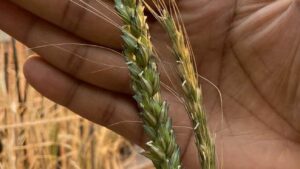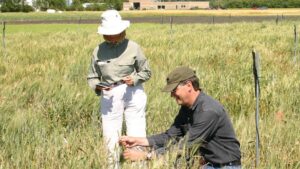Following 10 years of large-scale, international research, a handful of scientists finally assemble the wheat genome to its most complete and contiguous state.
The wheat genome is both colossal and complex, over five times the size of the human genome, and has posed an immense puzzle to scientists for decades. A postdoc could spend their entire fellowship identifying a single gene of interest.
The immensity of the task saw the foundation of the International Wheat Germ Sequencing Consortium, consisting of 1,800 members across 62 countries.
Professor Steven Salzberg, genomicist at Johns Hopkins University, described the genome like a gargantuan jigsaw puzzle. “The wheat genome is full of blue sky,” says Professor Salzberg, “all these pieces look like a lot of other pieces, but they’re not exactly alike.”
But it was six scientists from the US and UK, with a lot of very high-spec technology, which made the breakthrough.
“I think we’ve moved beyond the era where genome projects have to be these monolithic international cooperation’s,” says Professor Neil Hall, director of the Hall Group at the Earlham Institute and member of the BBSRC Exploring New Ways of Working Strategy Panel. “Genomics is more like the gig economy now.”
Assembling the genome took a total computer processing time equivalent to 53.7 years across just over five months of elapsed time. Owing to its hexaploid structure, the genome for common bread wheat, Triticum aestivum, has ‘one of the most complex genome sequences known to science,’ according to the paper, published on 23 October 2017.
As the most extensively cultivated crop worldwide against a backdrop of increasing demand to produce more food with greater security, this comes as a welcome breakthrough. It means that wheat may be able to be cultivated to become a stronger and more sustainable crop.
Professor Hall believes that this novel approach is a sign of the times for genetic research.













